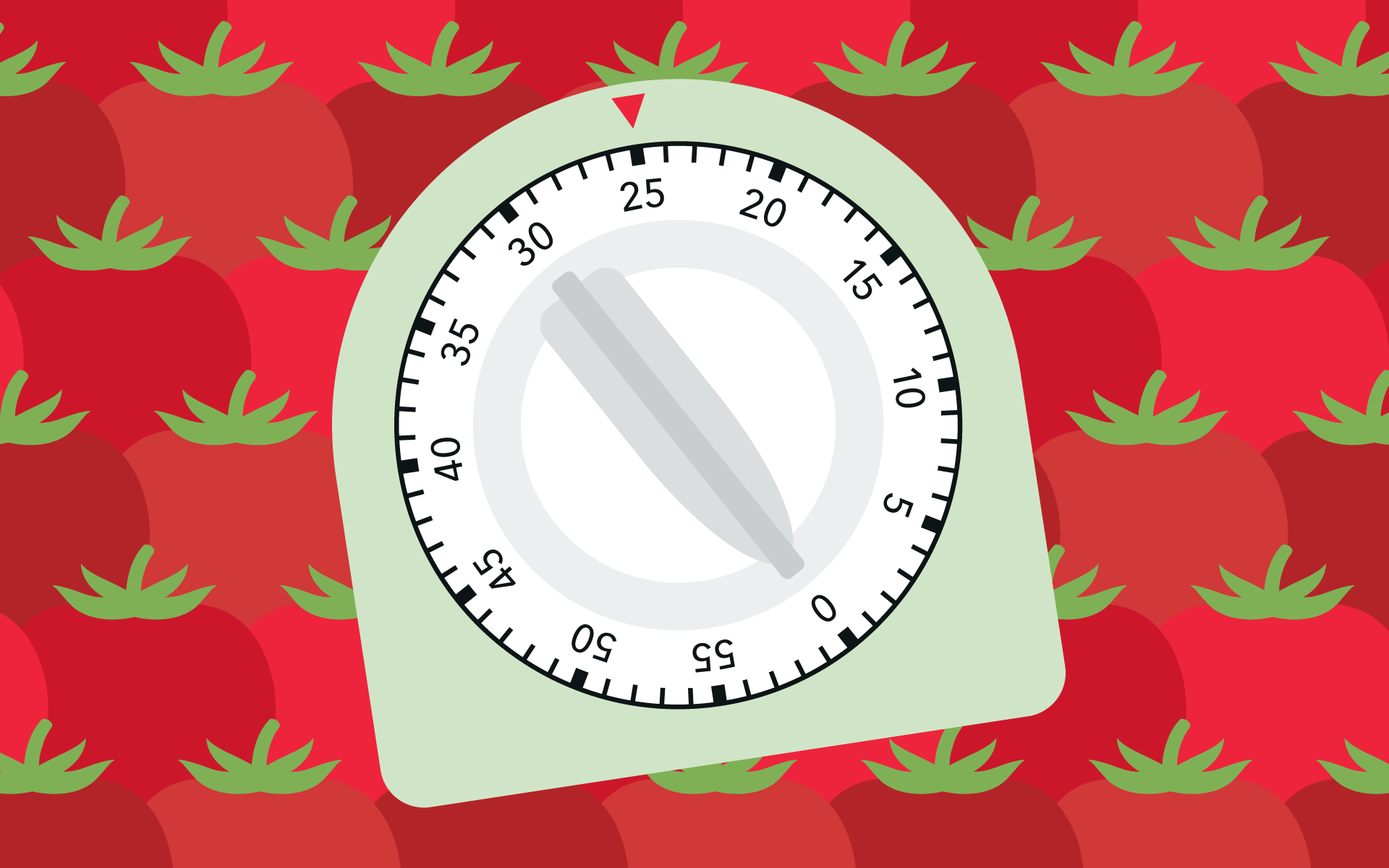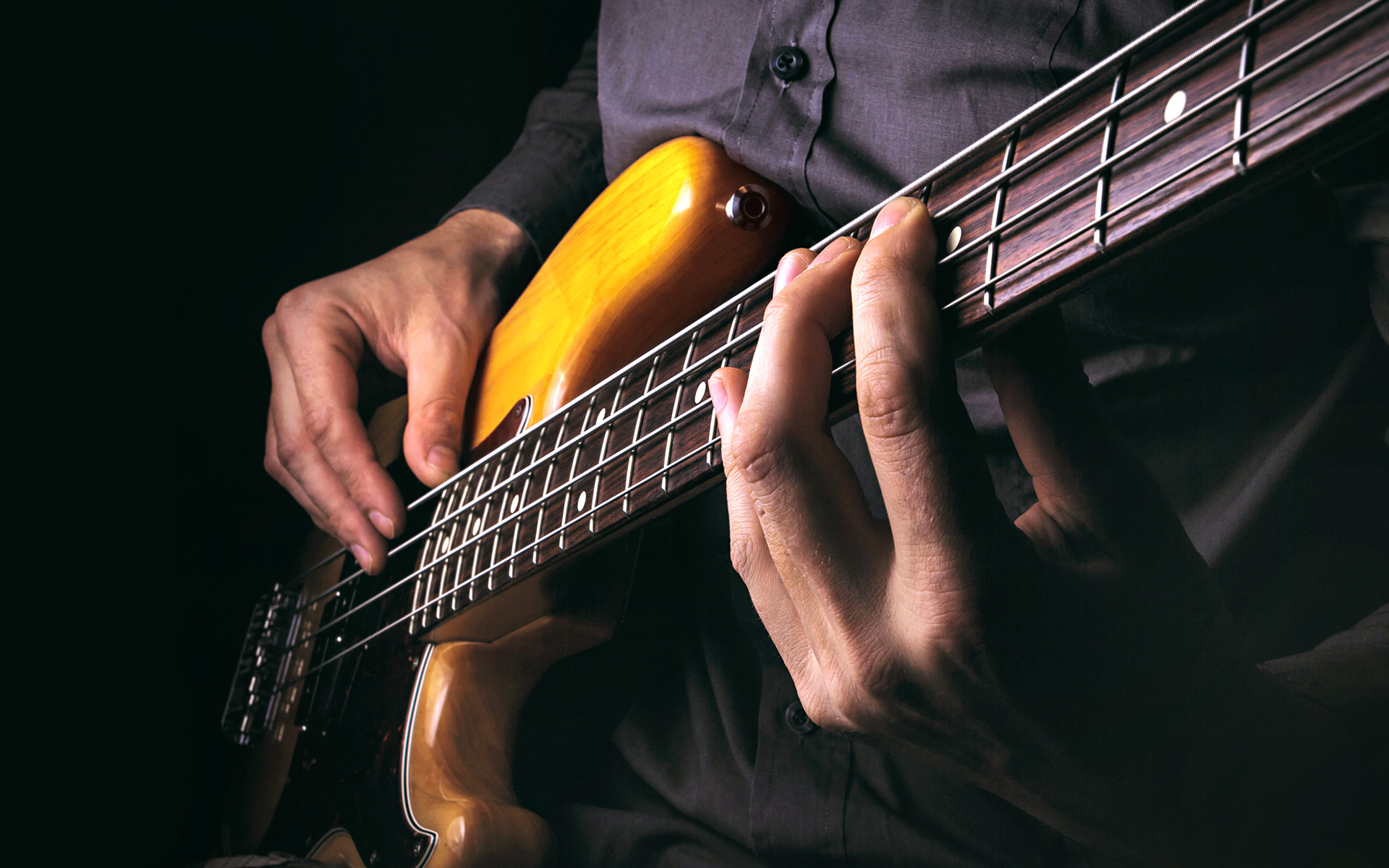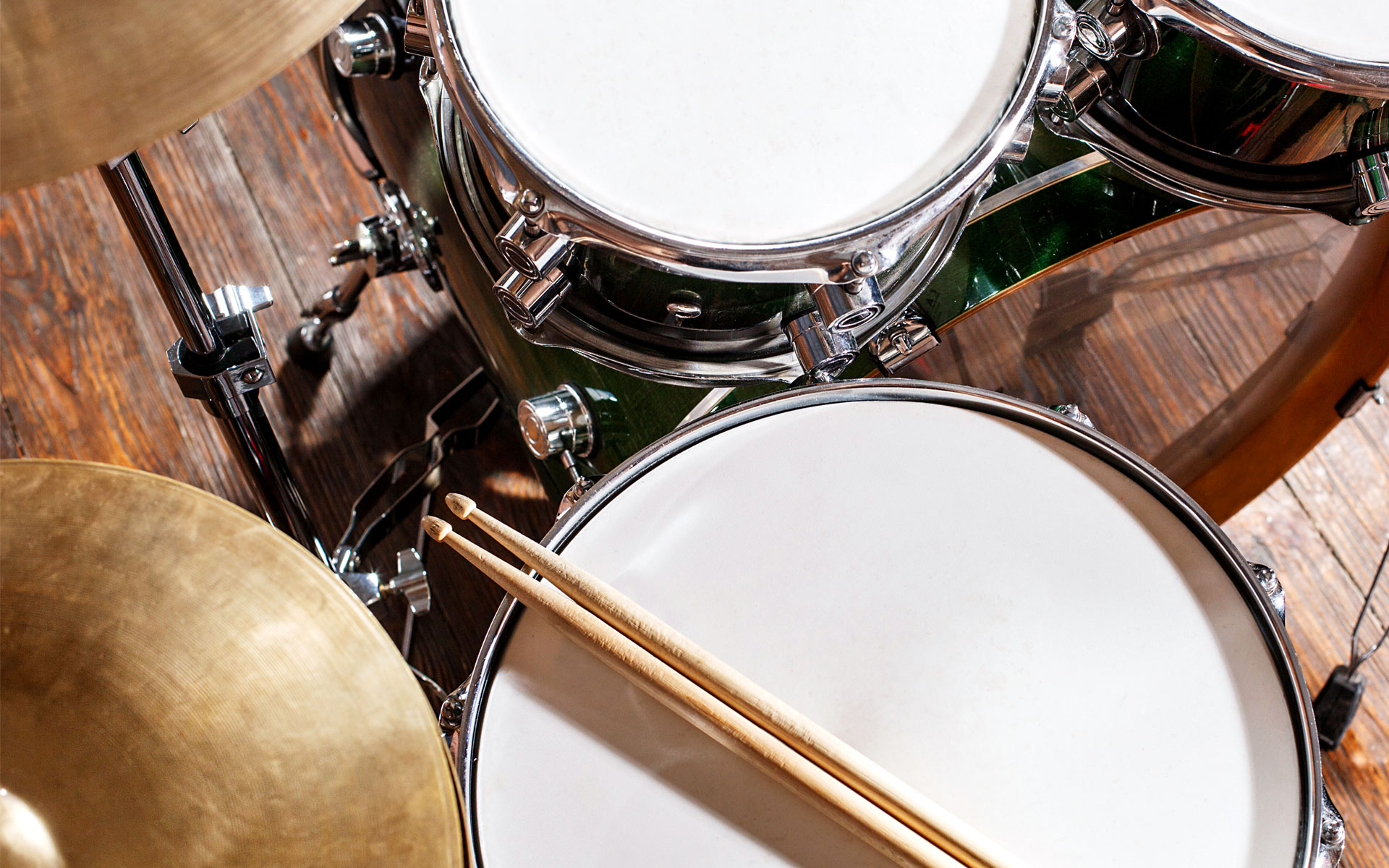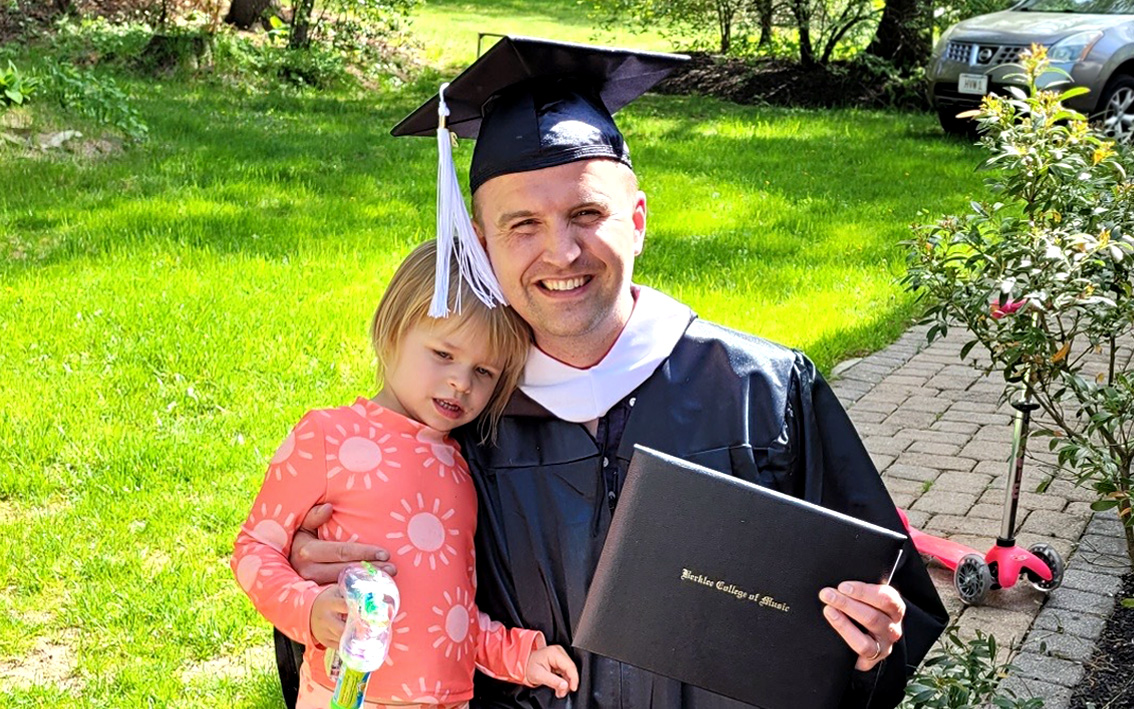The following information on the Pomodoro Technique is excerpted from the Berklee Online course Jazz Singing 201, written by Patrice Williamson, and currently enrolling.
Developing a consistent practice routine is essential for making improvements in your musical craft, whether you’re a vocalist (like I am), an instrumentalist, music producer, etc. A good method for successful study or practice is to set time limits. I don’t know about you, but I am easily distracted. However, if I give myself permission to take a short break after a duration of focused work, I get more done.
There is a very well-known method called the “Pomodoro Technique” that can help us stay focused and beat fatigue while we practice. “Pomodoro” is Italian for tomato. Yes, we’re going to improve our efficiency one tomato at a time. Let’s explore how you can incorporate the Pomodoro Technique into your practice routine.
What is the Pomodoro Technique?
The Pomodoro technique is a time-management system that involves setting a timer for 25 minutes, followed by a five-minute break. The inventor of the method, Francesco Cirillo, used a kitchen timer in the shape of a tomato (hence the name “pomodoro”), but there are plenty of online timers you can use. Each set of 25-minute sessions is considered a “pomodoro” and when you complete four (25 minutes of concentrated work with a five-minute break), you can take a longer 15- to 30-minute break, and then you start over. The idea is to help you pace your mental energy throughout a long task. The Pomodoro Technique can be especially useful for musicians to help break up long practice sessions and the time limits can be adapted to your needs.
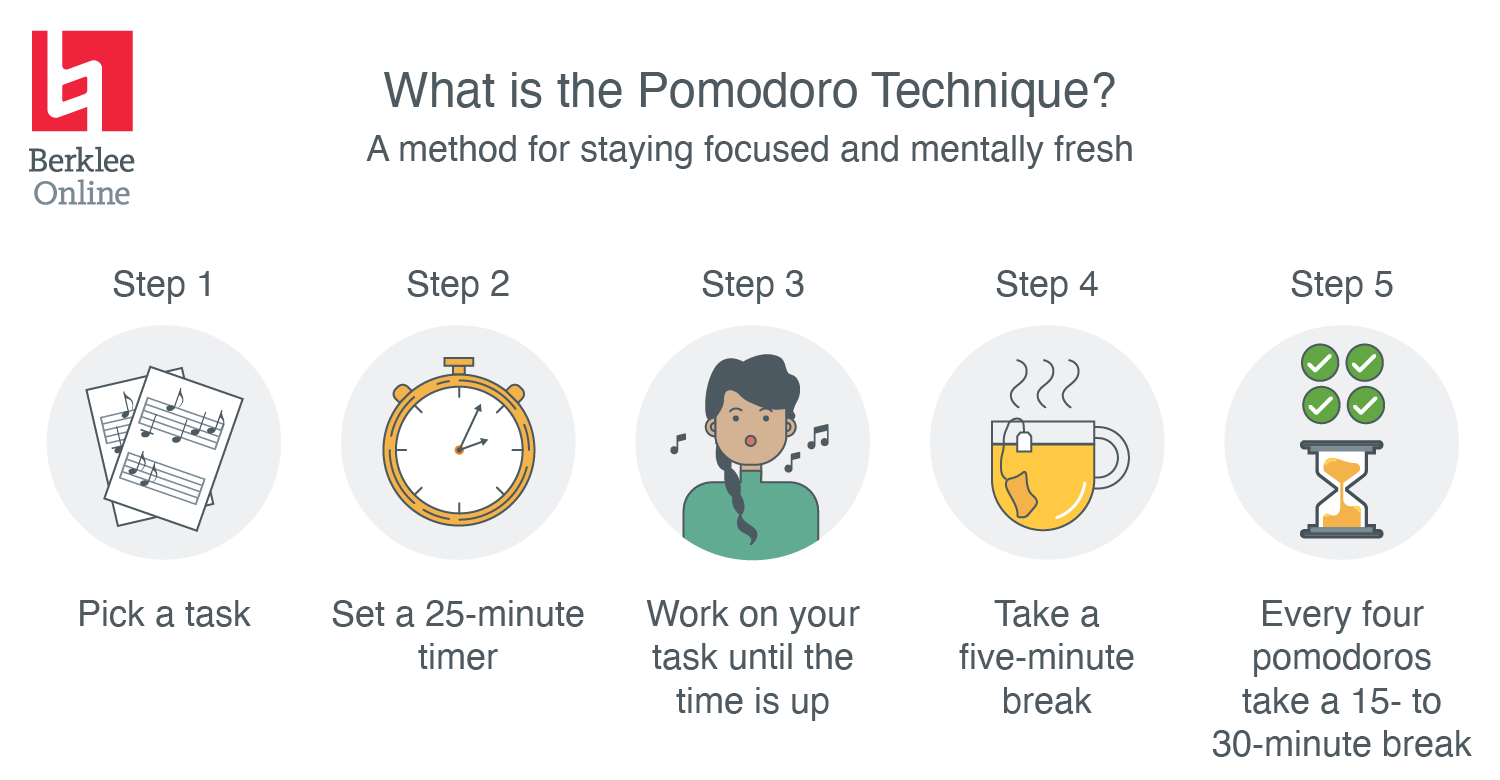
Create a Pre-Practice Ritual
Before you can jump into the Pomodoro Technique, it is a good idea to set your intentions for your practice session, or a pre-practice ritual. When I was in college I discovered that I was a “list” person. I needed to write out a plan of action for my practice sessions. If I didn’t, I’d just sing or play what already sounded good. The list helped me identify the goals for my practice time, and those goals were identified by answering a series of questions.
- Is there a particular skill that needs improvement?
- Where are the difficult phrases/passages in a song/piece?
- Am I telling the story?
- How’s my enunciation?
- Does my rhythmic interpretation feel good?
- And of course, what was the assignment?
In addition to my list, I needed water, a metronome, a pencil for marking my music, a recording device to document my progress, and a piano or tracks for the accompaniment. Your list may look different depending on what you are trying to accomplish, but these are just some ideas. I also discovered that I couldn’t concentrate if the room was untidy. This wasn’t a problem in a small practice room, but when I was lucky enough to find an empty classroom, that was a different story. I only mention this because until I figured out that I needed to take a few minutes to tidy up my practice space, I wasted a lot of time, which hindered my progress. I encourage you to reflect on the various factors that could be hindering your progress, and how you can address it in your pre-practice ritual.
How Long Should I Practice?
Realistically the length of your practice session depends upon the time that you have available. Two hours is ideal, but not always feasible. Consistent practice is more important than a single long practice session.
Create a Practice Session Plan
Here is an example practice session plan divided into specific activities for my expertise, jazz vocal development, with the goal of applying the individual elements to the final performance. However, you can adapt this to any musical practice. The order in which you tackle each element is up to you.
Vocal warm-up/technique – 15 minutes
Song review – 30 minutes
Short break – stretch, drink some water, walk around the room, etc.
Scat syllables – 10 minutes
Blues/jazz licks – 20 minutes
Short break
Improvisation practice – 30 minutes
Short break
New song study – 30 minutes
Notice how my time limits stray from the Pomodoro Technique, however the important aspect is that there is a roadmap set into place, with breaks! Feel free to adapt this idea. Adjust the length of time to work better for you. Adjust the number of items. Customize this to work as best as it can for you personally.
Make Time for Reflection
As you vary your practice routine to find the version that works best for you, I strongly encourage you to maintain a practice journal. You could use a notebook for a handwritten journal or an electronic version online. The journal is where you will log what you worked on and take notes on things that went well, things that were challenging, specific goals for another day, and all winning moments.
Here’s an example of what one of my post-practice reflections might look like:
April 3:
- Learned “What Is This Thing Called Love”
- Read the lyrics, focusing on pronunciation, enunciation, and articulation
- Memorized lyrics
- Worked on storytelling
- Listened to Ella’s recording to become familiar with the melody
- Began learning the melody by humming along
- Sang the melody with the lyrics
- Had difficulty in measure 6 where the melody goes out of the key
- Noticed that my swing groove has improved 🙂
Tomorrow:
- Read through lyrics, focus on diction, and experiment with different inflections
- Review difficult passage slowly until comfortable
- Sing song at a faster tempo
- Scat melody and begin work on melodic variations
You are welcome to download my Practice Plan and Reflection Template. The template is in “view” mode on Google Docs. Simply go to File > Download to get your copy to make your own.
Having an organized plan beforehand will help you learn quickly. I suggest that you schedule your practice ahead of time, and commit to daily practice for consistent progress. You could also consider dividing your daily practice time into more than one session.
Developing a comprehensive practice routine will help you learn and improve on new skills. A practice routine will also help you apply said skills to broaden your musicality, develop your improvisation, and expand your repertoire. Establishing a solid practice routine is beneficial for successful execution of your musical craft. Since there isn’t a limit to creativity, there’s always more to learn and every new thing you learn will only enhance what you already know.
Take a Course With Patrice Williamson





